Top Ten Unique Filipino Holy Week Traditions ✝️ 🙏
Hi Steemians!
While I was working this week, I noticed everywhere that it seems to be more quiet and I arrived to work earlier than my usual. Maybe because students were already taking their summer breaks. I remembered there will be an upcoming long weekend. There will be 3-day holiday from Thursday to Saturday. Yes! That means no work for four days (that includes Sunday)! Others already took their vacations from Monday to Wednesday to extend the week-long holiday.
So why is there a holiday in the Philippines this long? The Philippines, as a Roman Catholic country, which comprises 81% of the population, is celebrating Holy Week.
Holy Week or Semana Santa is the week of observance on the death and resurrection of Jesus. It starts on Palm Sunday and ends before Easter Sunday.
There are certain practices that Filipinos do on Holy Weeks. Some of these are unique from other Catholic countries. So here are Top Ten Unique Filipino Holy Week Traditions:
1. Palaspas
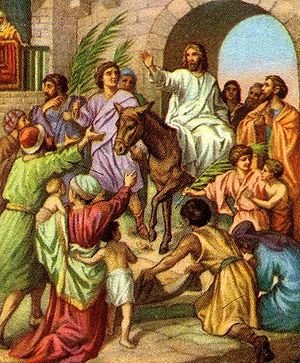
The Palaspas or the palm fronds are used to commemorate the welcoming of Jesus in Jerusalem. The palm fronds are intricately woven into different designs and sizes. These are brought in the church during Palm Sundays where priests bless them. The blessed palaspas are then either put on front doors to protect the household year round.

2. Moriones Festival
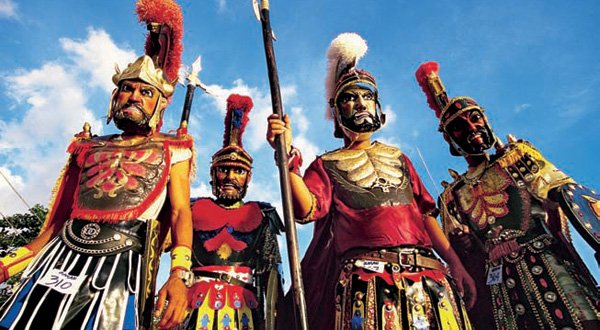
Moriones Festival is celebrated in Marinduque, Philippines to remember the roman soldier, Longinus, who pierced through the side of Jesus. He was half blind but when some blood of Jesus fell on his eyes, his blind eye was able to see again. This converted Longinus to Christianity. The highlight of the celebration is the reenactment of Longinus' struggle to hide and getaway from his fellow centurions who is pursuing him.
3. Pabasa or Pabasa ng Pasyon

Pabasa is the chanting of verses of the Pasyon, a poem depicting the passion, death and resurrection of Christ. This is often accompanied by musical instruments.
4. Senakulo
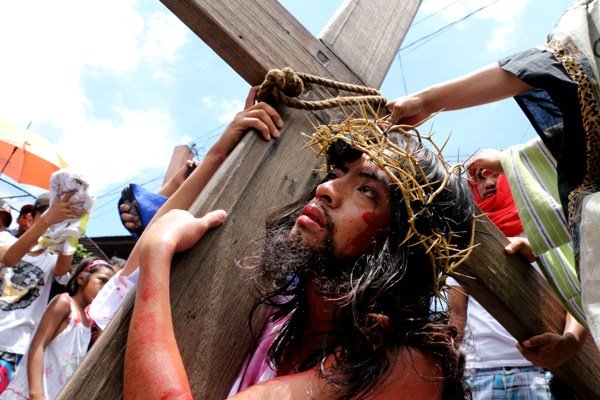
Senakulo or Passion Play is like the Pabasa where it still depicts the passion, death and resurrection of Christ. One thing that it differs is that it involves dramatic playing of the life of Christ.
5. Visita Iglesia
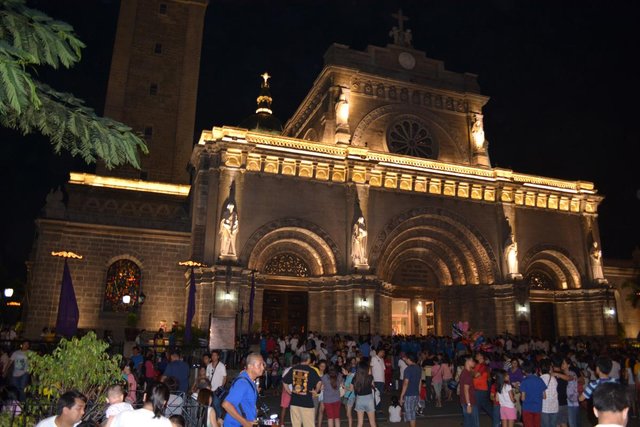
The Visita Iglesia is a practice in Holy Week wherein Catholics visit and pray in 7 different churches. This was introduced to the Philippines by the Agustinians in the 1560s. This originated in Rome where a pilgrimage was done to the 7 Basilicas where the tombs of the prominent martyrs like St Peter and St Paul were believed to be located.
6. Siete Palabras
Siete Palabras is a program in the church or in radios or TVs wherein speakers reflect the seven last words of Christ. It starts in 12:00 PM and ends in 3:00 PM upon death of Christ.
7. Penitensya and Crucifixion Rites
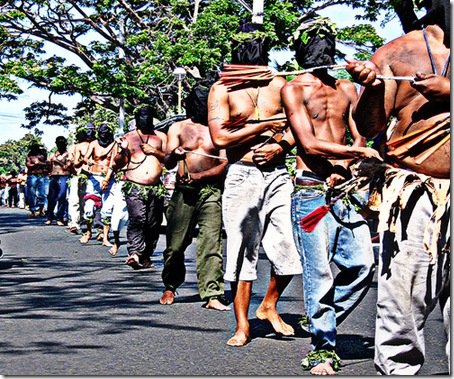
Penitensya or self-flagellation happens when someone hurts or whips himself so that he will also feel what Jesus felt when he was also scourged at the pillar by the Roman soldiers. Others get into a different level and let himself carry a cross and be crucified.
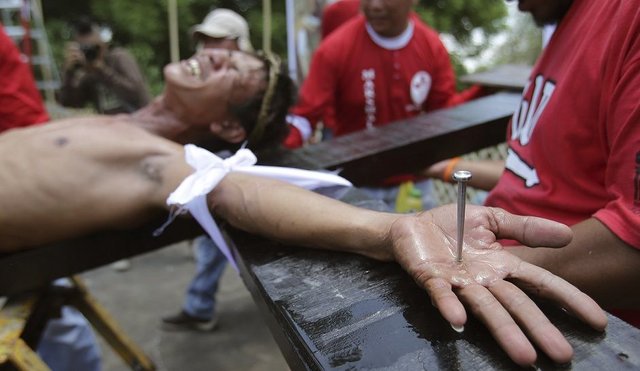
8. Blessing of Fire and water
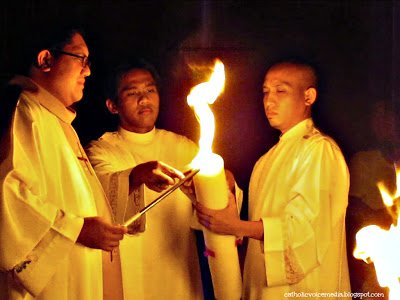
Blessing of Fire and Water is a pre-Easter ritual that is done on the late evening of Black Saturday or during Easter vigil. It starts with all the church lights dim, then the blessing and lighting of the Easter candle. The fire from the Easter candle is then passed on to every person's candle. This ritual is so solemn that it gives me goosebumps. Then it is followed by blessing of the Easter water. New members of the church are baptized using the blessed water. All are then blessed with the holy water and renewed with the baptismal promises.
9. Salubong or Sugat
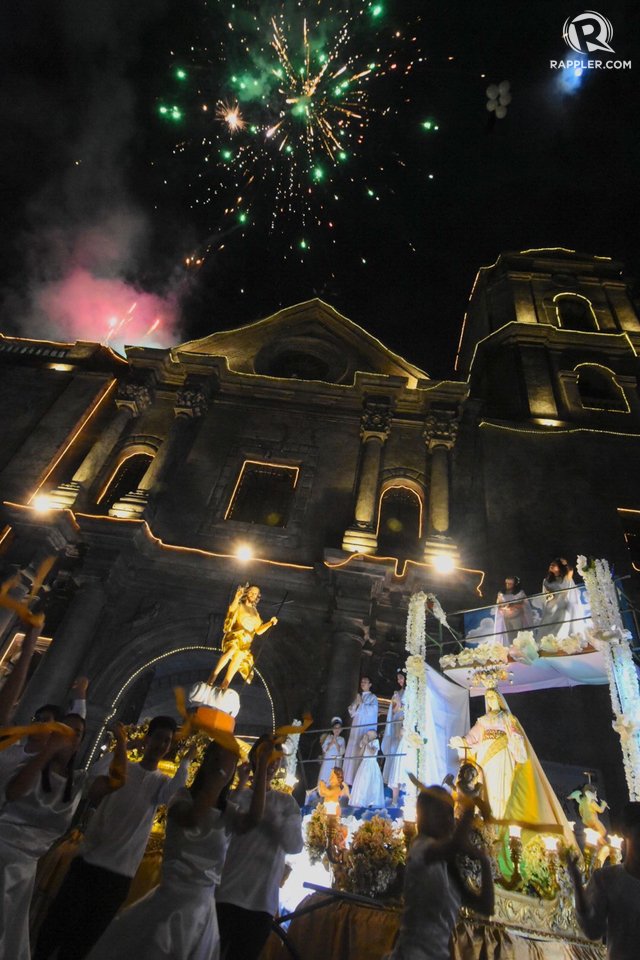
Salubong or Sugat in Visayan marks the start of Easter. This celebrates the meeting of Mary and Jesus after Christ's resurrection. Filipinos celebrate the Salubong by having a dawn procession and ends in front of the church where the statues of Mary and Jesus meet. This event's festivity is added with fireworks, music and dancing.
10. Ginataang Halo-Halo or Binignit
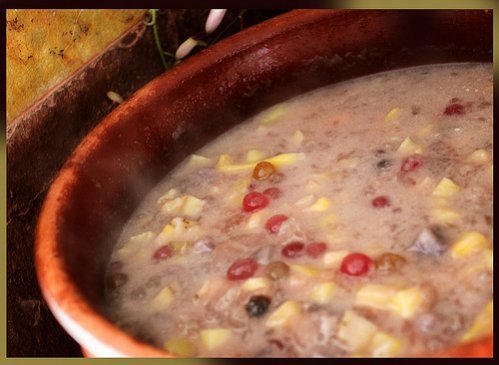
In Cebu, Binignit or Ginataang Halo-Halo becomes a staple food during the Holy Week. It was not certain how this food becomes a tradition. Maybe because it does not contain any meat that is fit for fasting. It is a mixture of saba bananas, camote, taro with coconut milk as soup. Landang or langka is added to make the mixture thick. Lastly, colorful pearl sago is added to put more color to this dessert and muscovado sugar to sweeten.
This year, I may not have witnessed all of the Holy Week traditions, but I have kept in mind the essence of this celebration, which is self-reflection and spending time with my loved ones.
Love lots,
@wandergirl❤️

References:
Asian Journal
Istorya.net
What's Happening
GMA Network
Wikipedia-Linggo ng Palaspas
Wikipedia-Pabasa
The Splendor of the Church
Rappler-Visita Iglesia
Rappler-Salubong
Catholics and Cultures
Culture Spices
SD San Antonians
Catholic Voice Media
CBCP News
Inquisitr
How did the Philippines come to be such a strong Roman Catholic country?
Maybe because we were influenced by the Spaniards who colonized us for 300+ years. 😀
Yes i just looked at Wikipedia they first came in the 16th century and today over 80% of the population is catholic, guess it really stuck.
They really go all out. Things are so much more subdued here in Canada. But there is a whole lot of chocolate in the offering:) Happy Easter, Wandergirl:)
It's really different here in the Philippines. Such traditions just bring interests in our country. Happy easter too @prydefoltz!